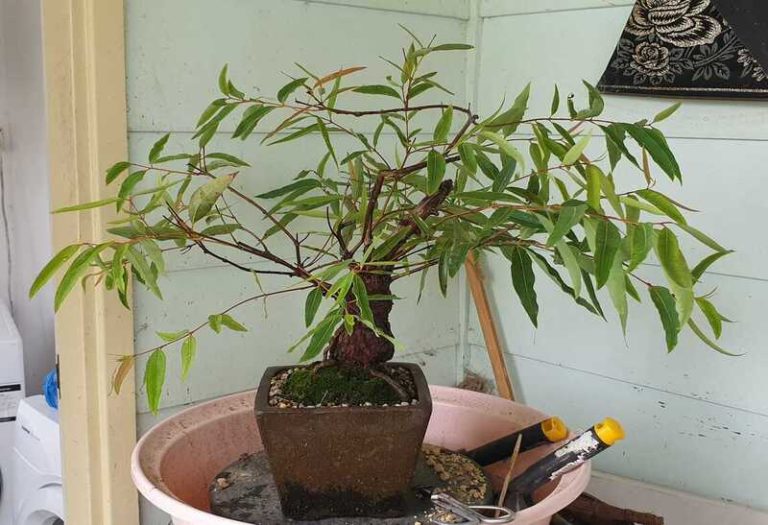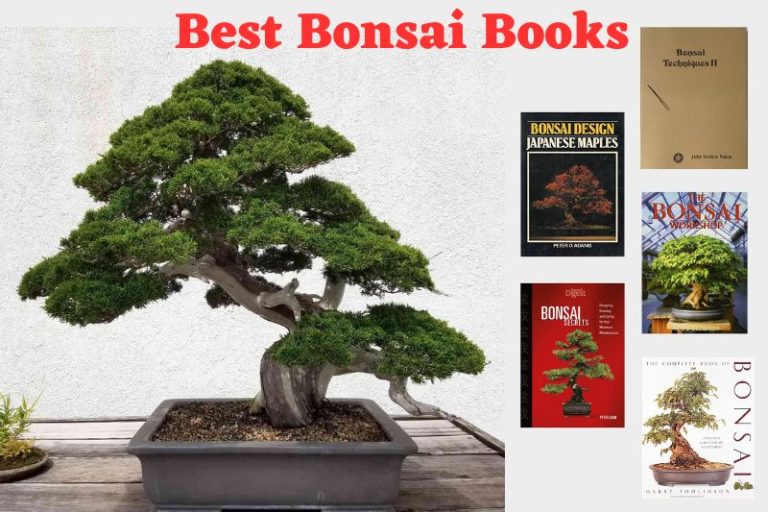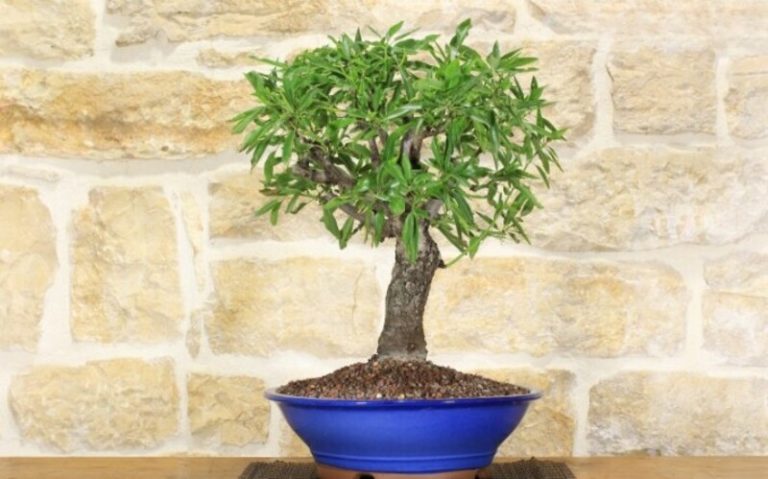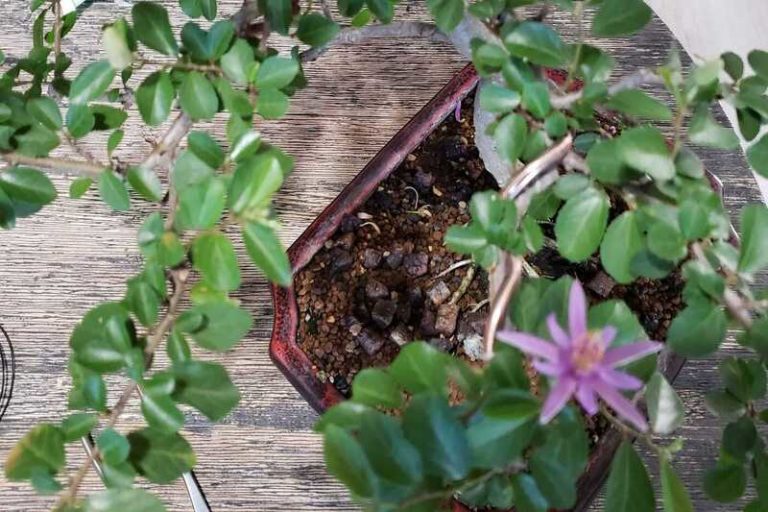Windswept Bonsai: The Art of Shaping Nature
Windswept bonsai is a style of bonsai that makes the tree look like it was shaped by strong winds. A bonsai’s branches are taught to grow in one direction, usually away from the prevailing wind, giving it a striking and dynamic appearance. The rough environments of coastal places, where trees are molded by the continual sea breeze, are generally linked with this form of bonsai.
What is Windswept Bonsai?
Windswept Bonsai is a type of bonsai that resembles the appearance of trees carved by the wind. The limbs of a bonsai tree are taught to grow in one direction, often away from the prevailing wind, to create a distinctive and eye-catching look.
The windswept look is frequently linked with trees that grow in tough conditions, such as coastal or mountainous locations, where the wind has a considerable influence on their growth. Windswept bonsai are a popular option among bonsai lovers all over the world due to their beauty and dynamic look.
History and Origins of Windswept Bonsai
In Japan, where the discipline of bonsai has been used for many years, windswept bonsai has its origins. A type of artistic expression, bonsai was originally developed to care for plants in restricted spaces.
The windswept style emerged as a way to capture the beauty and drama of nature. It took its cues from trees that flourish in arid environments like mountainous or coastal regions, where the wind shapes them. By mimicking the appearance of these trees, bonsai artists could create miniature versions of nature that were both beautiful and powerful.
Over time, windswept bonsai has become popular around the world, and many bonsai enthusiasts have developed their own unique styles and techniques. Some have even adapted the windswept style to suit the local environment, creating bonsai that resemble trees growing in their own region.
Windswept bonsai are prized today for their beauty and their capacity to inspire surprise and wonder in those who view them. It is evidence of the strength of nature and the artistry of bonsai, who can condense it into miniature form.
Types of Windswept Bonsai
There are various types of windswept bonsai, and each has its own unique characteristics. Here are some of the most popular types:
Moyogi-style windswept bonsai: This style features a trunk that is slightly curved, with branches that are trained to grow in one direction, typically away from the prevailing wind. The result is a tree that appears to be leaning slightly in one direction.
Fukinagashi-style windswept bonsai: This style features a trunk that is curved dramatically, with branches that are trained to grow in the same direction as the curve. The result is a tree that appears to be bending in the wind.
Han-Kengai-style windswept bonsai: This style features a trunk that is trained to grow horizontally, with branches that are trained to grow downward. The result is a tree that appears to be growing on the side of a cliff, with its branches reaching towards the ground.
Ishitsuki-style windswept bonsai: This design portrays a tree that has grown on a rock or a piece of driftwood. The tree is trained to grow in a windswept pattern, with its limbs growing in one direction, away from the wind.
Netsuranari-style windswept bonsai: This style features a tree with multiple trunks that are trained to grow in a windswept style. The trunks are arranged in a way that creates a sense of movement and dynamism, as if the tree is being buffeted by the wind.
Windswept bonsai have their own distinct beauty and charm, and bonsai lovers frequently select a style depending on their particular preferences and the setting in which they intend to show their tree.

Windswept Bonsai and Its Symbolism
Windswept Bonsai is more than simply a lovely art form; it also has significant symbolic value. Because the trees that inspired this style are often found in harsh environments where they must withstand strong winds and other environmental stressors, the windswept style of bonsai is often associated with resilience, strength, and endurance.
The windswept form of bonsai is closely related with the Japanese philosophy of “wabi-sabi,” which appreciates the beauty of imperfection and the fleeting nature of life. With its asymmetrical shape and twisted branches, the windswept tree is considered as a metaphor of the impermanence of all things and the beauty that may be found in natural imperfection.
The windswept aesthetic of bonsai may also represent humanity’s battle against natural forces. The tree’s tenacity in the face of high winds and difficult conditions might be seen as a metaphor for human endurance and resolve.
Finally, the windswept style of bonsai can represent the harmony that exists between humans and nature. The tree, which is fashioned to imitate the natural world, indicates a link between humans and their surroundings.
Overall, Windswept Bonsai is a beautiful and meaningful art form that can inspire us to appreciate the beauty of imperfection and the strength of the human spirit.
Characteristics of Windswept Bonsai
Windswept Bonsai has unique characteristics that set it apart from other bonsai designs. Here are several of the most notable characteristics:
1. Leaning trunk: The trunk of a windswept bonsai is often curved or leaning in one direction, mimicking the effect of strong winds.
2. Asymmetrical shape: Windswept bonsai typically have an asymmetrical shape, with branches growing in different directions and varying in length.
3. Twisted branches: The branches of a windswept bonsai are often twisted and gnarled, adding to the tree’s sense of movement and dynamism.
4. Deeply furrowed bark: The bark of a windswept bonsai often appears more deeply furrowed than that of other bonsai styles, reflecting the harsh environmental conditions in which the tree would grow.
5. Minimal foliage: Windswept bonsai often have minimal foliage, with leaves and needles growing primarily on the windward side of the tree.
6. Angular movement: The movement of a windswept bonsai is often angular, with branches growing in sharp angles rather than gentle curves.
In general, the characteristics of windswept bonsai reflect the severe environmental conditions under which the trees that inspired this design would develop. The outcome is a distinctive and potent art form that depicts the majesty and drama of nature.
How to Grow a Windswept Bonsai
Growing a windswept bonsai can be both rewarding and difficult, as it requires meticulous attention to the tree’s health and physical form. Here are a few suggestions for cultivating a windswept bonsai:
- Choose the right tree: Consider planting juniper, pine, or cedar, which are commonly found in windswept environments. These trees are more likely to develop the contorted and drooping qualities that characterize the windswept style.
- Start with a young tree: It is easier to shape a young tree into the windswept style than to try to force an older tree into the desired shape. Look for a young tree with a straight trunk and minimal branching.
- Prune and wire carefully: Pruning and wiring are key techniques for shaping a windswept bonsai. Be careful not to prune or wire too aggressively, as this can damage the tree’s health. Instead, make small adjustments over time to gradually shape the tree into the desired form.
- Consider the environment: A windswept bonsai needs to be grown in an environment that mimics the harsh conditions of its natural habitat. This means providing plenty of sun, wind, and good drainage.
- Care for the tree’s health: Due to its exposed and contorted branches, a windswept bonsai is more susceptible to disease and insects than other varieties. Maintaining the health of a tree requires consistent irrigation, fertilization, and insect management.
- Be patient: Shaping a windswept bonsai can take years, if not decades. Be patient and enjoy the process of watching your tree grow and develop over time.
Growing a windswept bonsai requires dedication and attention to detail, but the result can be a beautiful and powerful representation of the resilience of nature.
Benefits of Windswept Bonsai
Due to its exposed and contorted branches, a windswept bonsai is more susceptible to disease and insects than other designs. Maintaining the tree’s health requires regular irrigation, fertilization, and insect control.
Aesthetic appeal: Windswept bonsai have a distinct and dramatic appearance that can enhance the overall aesthetic appeal of any garden or living space.
Stress relief: Caring for a weathered bonsai can be a calming and meditative experience, reducing tension and improving overall health.
Environmental benefits: By filtering out pollutants and producing oxygen, growing bonsai trees, including windswept bonsai, can enhance air quality.
Educational value: Growing windswept bonsai can provide an opportunity to learn about the natural world, including the unique conditions and adaptations of trees that grow in windy environments.
Cultural significance: Bonsai has a rich cultural heritage in Japan and other parts of Asia, and growing windswept bonsai can provide a connection to this heritage and promote cultural understanding.
Growing windswept bonsai can provide numerous benefits, such as aesthetic appeal, environmental significance, and cultural significance. For both experienced and inexperienced cultivators, cultivating a desolate bonsai can be a rewarding and enriching experience.

Styling and Design of Windswept Bonsai
Styling and designing a windswept bonsai involves creating a tree that appears as though it has been shaped by the elements. Here are some tips for styling and designing a windswept bonsai:
1. Choose a tree with a straight trunk: The straight trunk will serve as the backbone of the windswept bonsai design. It is important to select a tree that is healthy and has a good base for the trunk.
2. Create the illusion of wind: The branches of a windswept bonsai should appear as though they have been shaped by strong winds. This is accomplished by wiring the branches in the direction of the desired curve or twist.
3. Create movement: The overall design of the windswept bonsai should convey a sense of movement. This can be achieved by placing the branches at angles that create a sense of motion.
4. Emphasize the curve: The curves and twists of the branches should be the focus of the design. This can be accomplished by removing foliage from the straight sections of the branches and leaving it on the curved sections.
5. Use an appropriate pot: The pot should be simple and unobtrusive, allowing the focus to remain on the tree. The color and texture of the pot should complement the tree’s natural appearance.
6. Create balance: The design should be well-balanced, with the tree’s foliage and branches equitably distributed. This can be achieved by meticulously pruning the foliage and branches to achieve the desired shape.
Designing and styling a windswept bonsai requires careful attention to detail and a keen eye for natural beauty. With patience and dedication, you can create a stunning tree that appears as though it has been shaped by the forces of nature.
How to Care for and Maintain Windswept Bonsai
Caring for and maintaining a windswept bonsai requires attention to detail and a commitment to providing the tree with the conditions it needs to thrive. Here are some tips for caring for and maintaining a windswept bonsai:
- Watering: The windswept bonsai should be watered regularly, with the frequency of watering depending on the tree species, pot size, and environmental conditions. Water the tree when the soil begins to feel dry to the touch.
- Fertilizing: Fertilize the windswept bonsai during the growing season, typically from early spring to late summer. Use a balanced fertilizer, applied every two to four weeks.
- Pruning: Prune the windswept bonsai regularly to maintain its shape and promote healthy growth. Remove any dead or damaged branches and trim back new growth to maintain the desired shape.
- Wiring: Check the wiring on the branches regularly to ensure that it is not damaging the tree. Remove wires that are cutting into the bark or branches, and rewire as necessary to maintain the desired shape.
- Sunlight: Windswept bonsai require a lot of sunlight, typically at least six hours per day. Place the tree in a location with plenty of natural light, or provide supplemental lighting as needed.
- Temperature and humidity: Windswept bonsai require a relatively consistent temperature and humidity level. Keep the tree in a location with moderate temperatures and protect it from extreme heat or cold. Additionally, use a humidity tray or mister to maintain the appropriate humidity level.
By providing the right care and maintenance, you can help your windswept bonsai thrive and grow into a stunning and striking addition to your garden or living space.
Windswept Bonsai care sheet
| Aspect | Care Tips |
| Watering | Water when soil is dry, avoid overwatering. |
| Fertilizing | Use balanced fertilizer during growing season. |
| Pruning | Regularly prune to maintain shape and promote growth. |
| Wiring | Check wiring regularly to avoid damage. |
| Sunlight | Provide at least 6 hours of sunlight per day. |
| Temperature & Humidity | Keep in moderate temperature and humidity levels. |
Conclusion
Growing Windswept Bonsai is a rewarding and enjoyable experience. With the right tree, pruning and shaping techniques, soil and fertilization, care, and display, you can create a stunning and unique addition to your garden or home.
FAQ:
Q: What types of trees are suitable for creating windswept bonsai?
A: Trees with flexible branches, such as pines, junipers, and maples, are best suited for windswept bonsai.
Q: How often should I water my windswept bonsai?
A: Watering frequency will depend on the species of the tree, pot size, and environmental conditions. As a general rule, water the tree when the soil begins to feel dry to the touch.
Q: Can windswept bonsai be grown indoors?
A: Although it is possible to cultivate windswept bonsai indoors, it is ideal to provide as much natural light and fresh air as feasible. If cultivating the tree indoors, position it near a south-facing window to maximize light exposure.
Q: Can I wire a windswept bonsai to create a certain shape?
A: Yes, wiring is an important technique for shaping windswept bonsai. However, it should be done carefully to avoid damaging the branches.
Q: What should I do if my windswept bonsai loses its shape?
A: Regular pruning and wiring can help maintain the shape of a windswept bonsai. If the tree has lost its shape, it may need to be re-wired and pruned to create the desired form.
Q: How do I fertilize my windswept bonsai?
A: Use a balanced fertilizer during the growing season, applied every two to four weeks. Follow the instructions on the fertilizer package for best results.
Q: Can I create a windswept bonsai from a young tree?
A: Yes, young trees can be trained into windswept bonsai by careful pruning and wiring. However, it may take several years for the tree to take on the desired shape.
Also Read:








